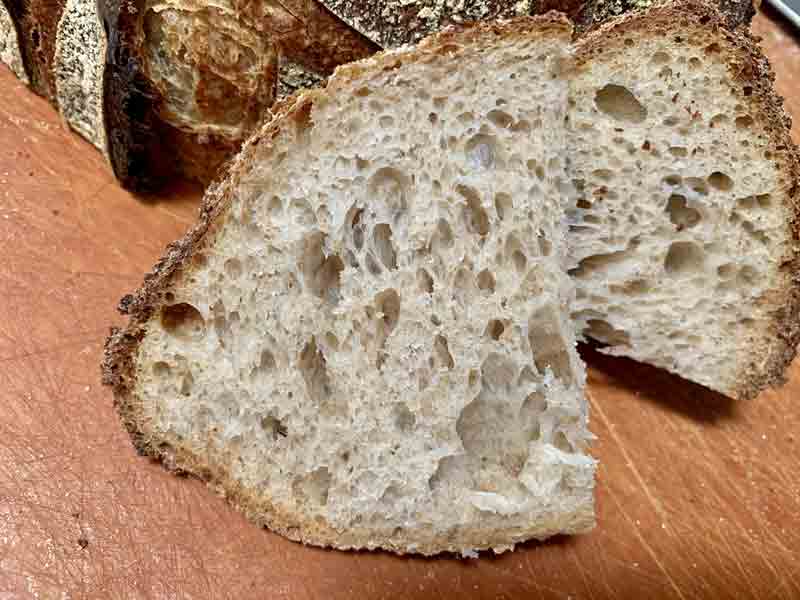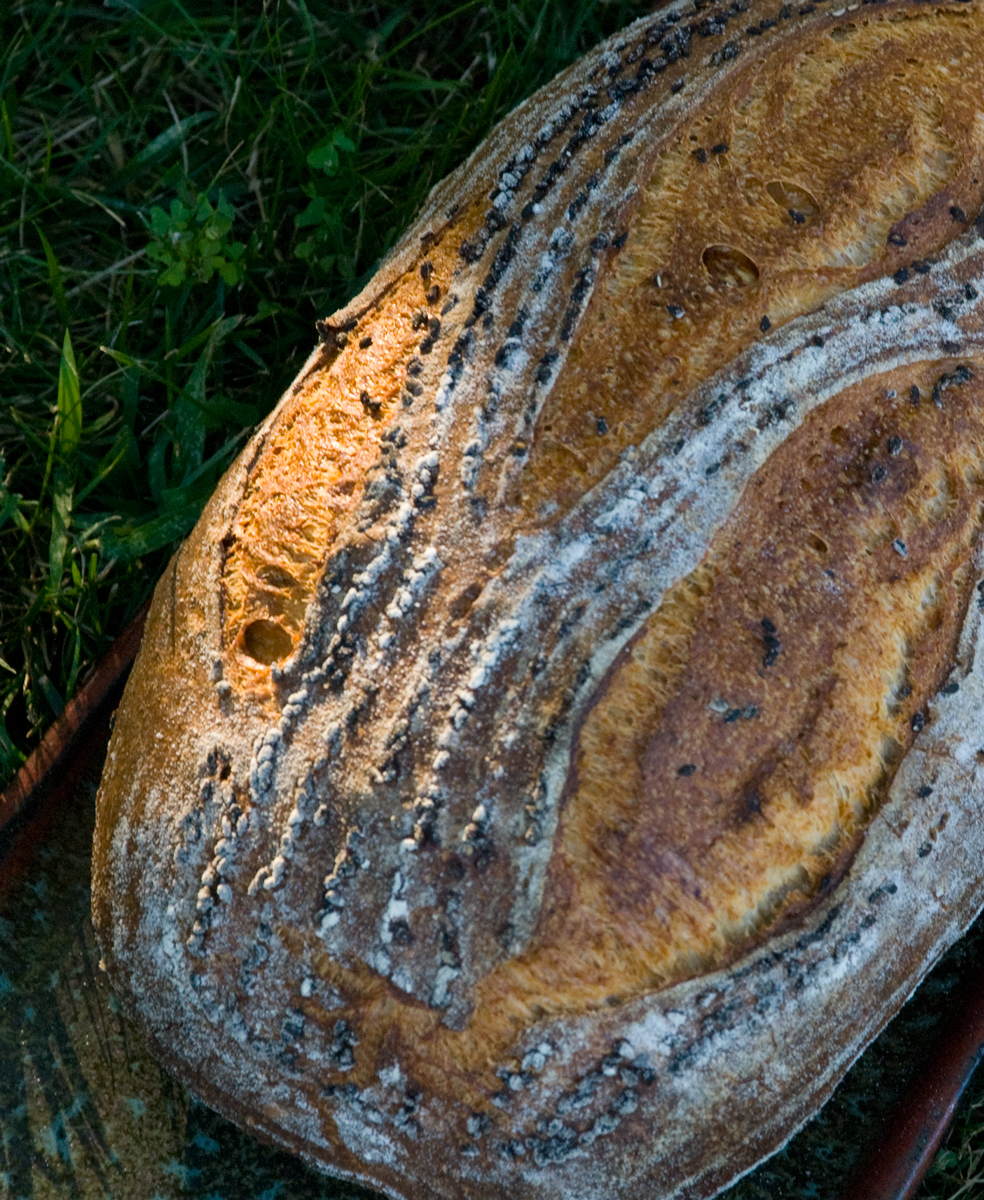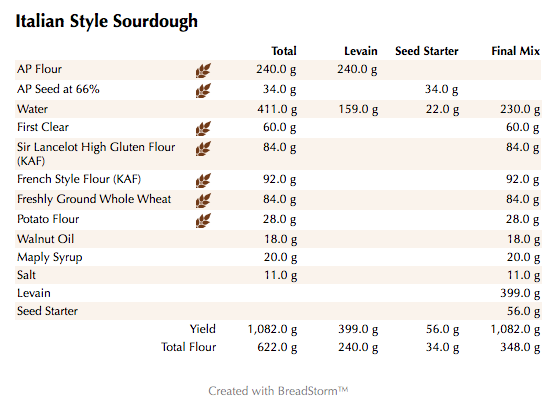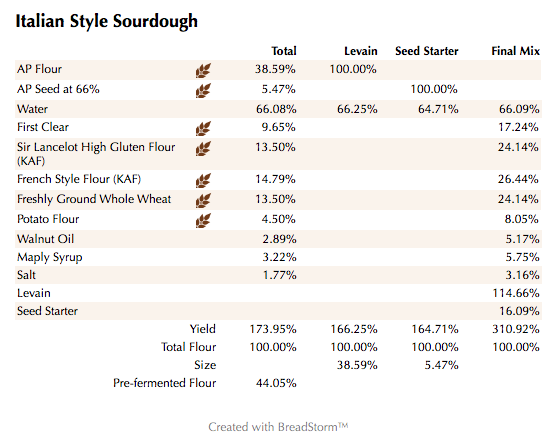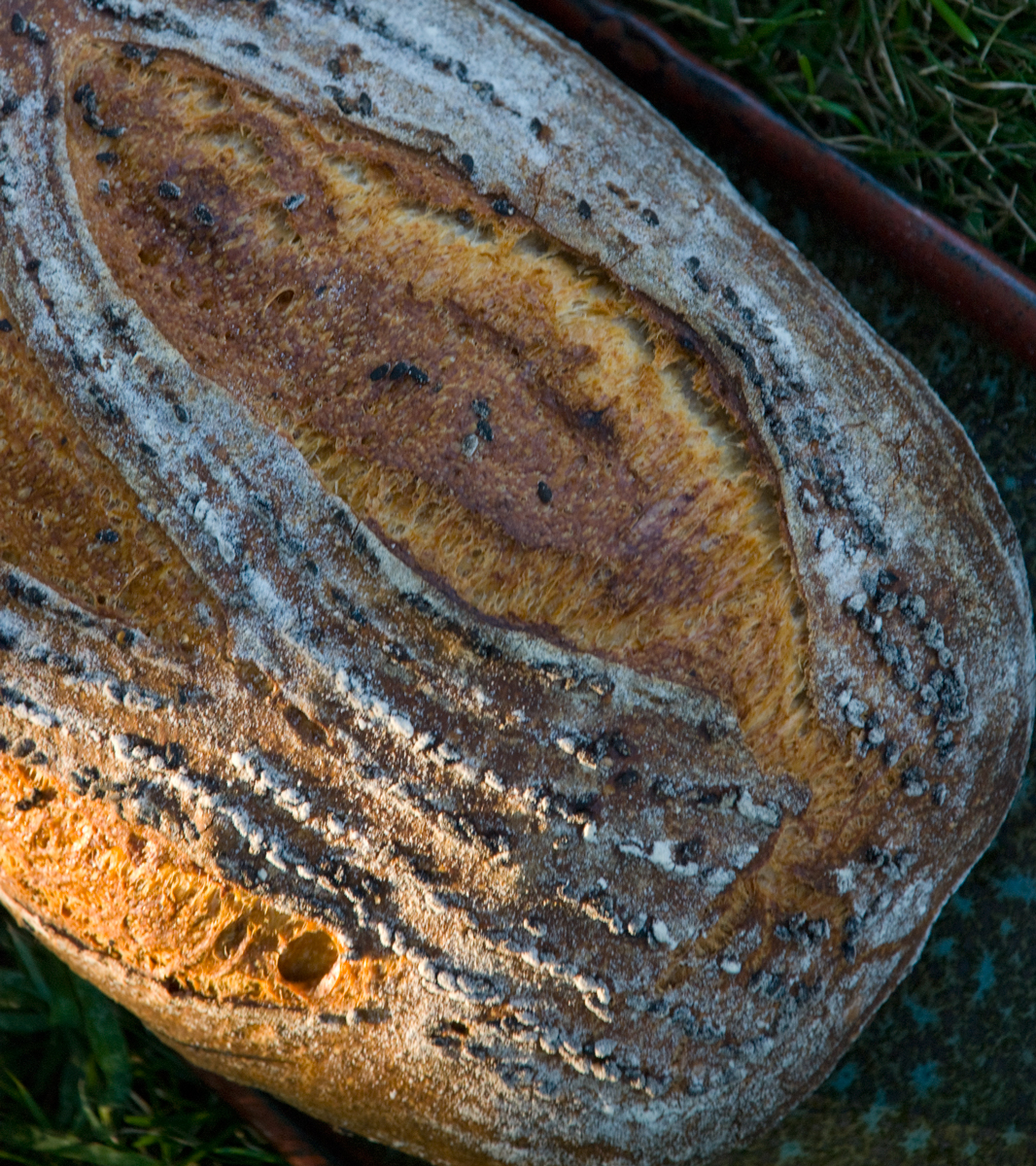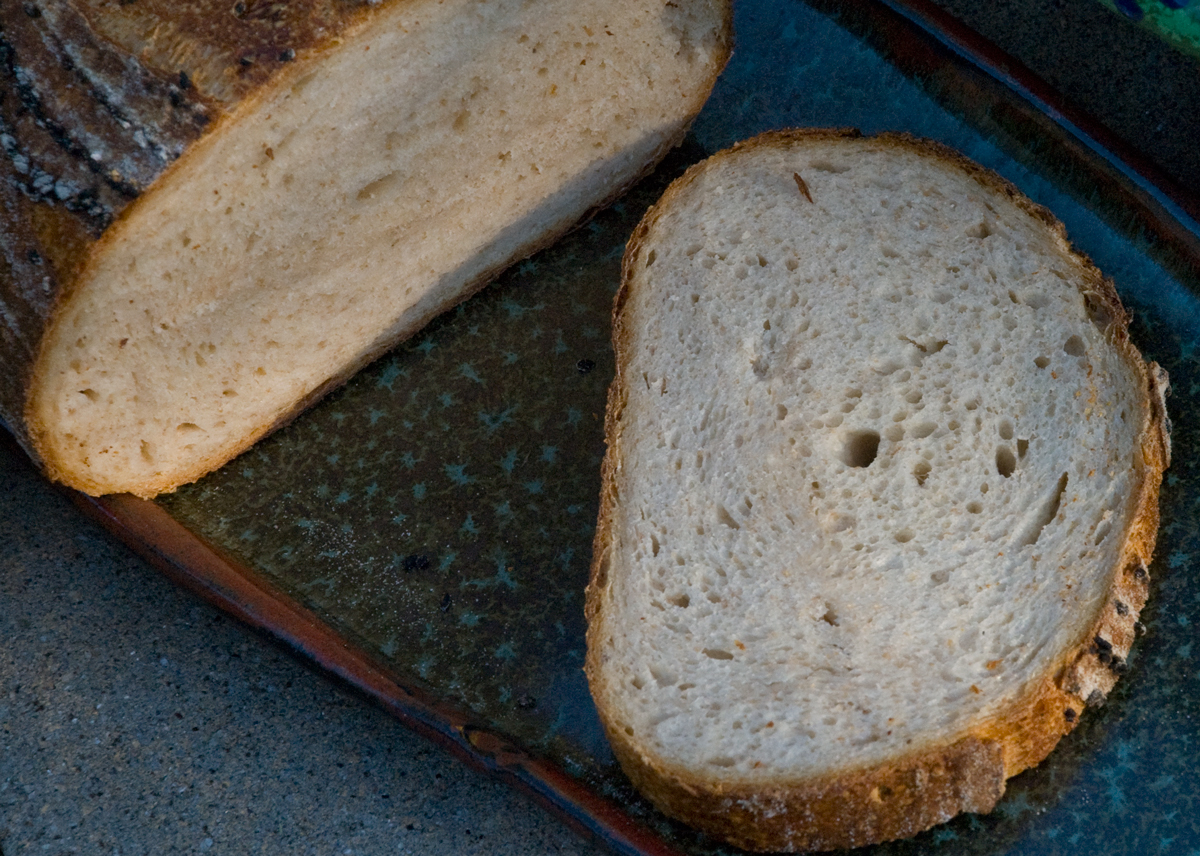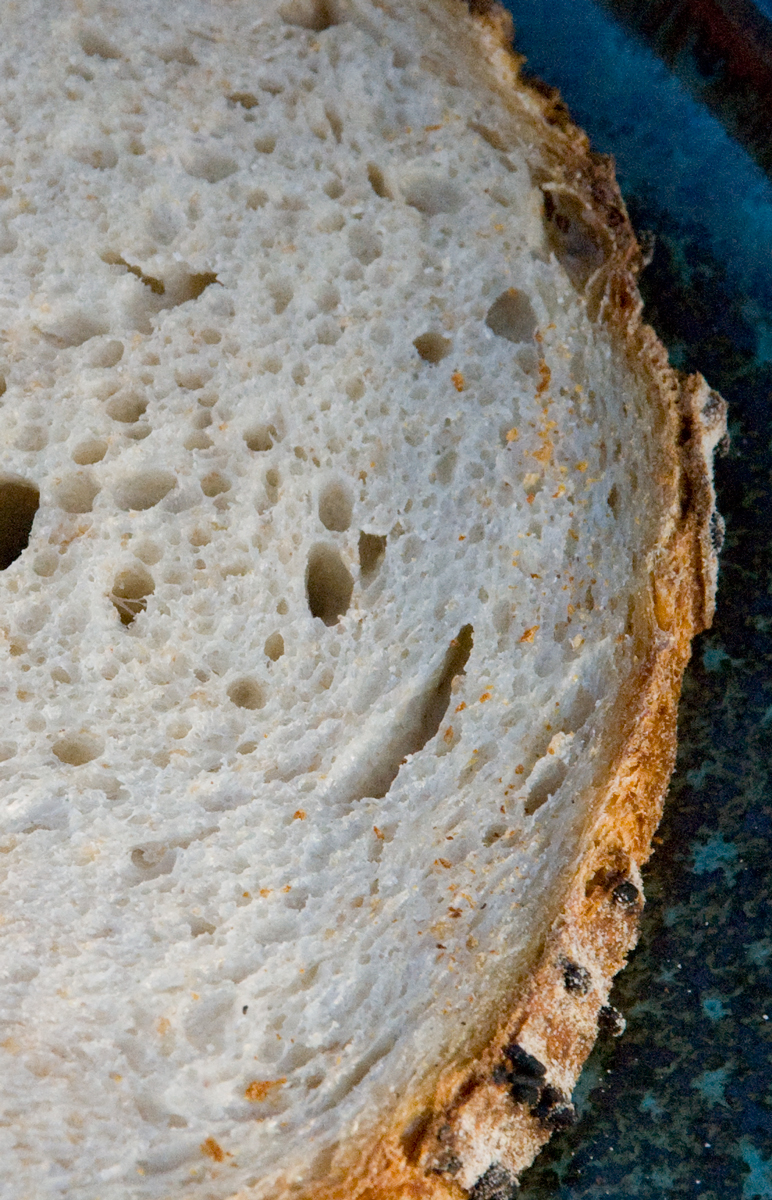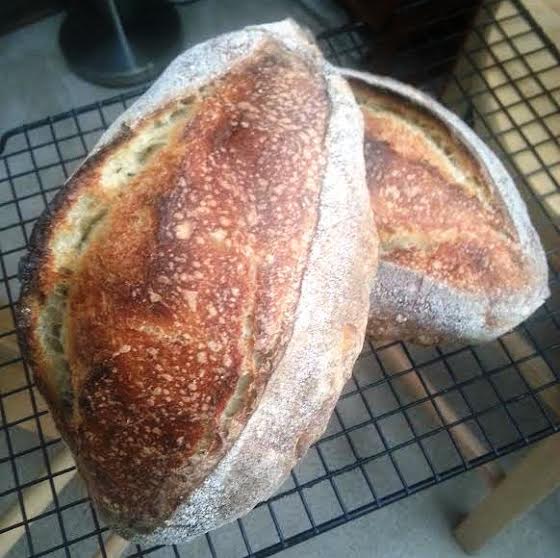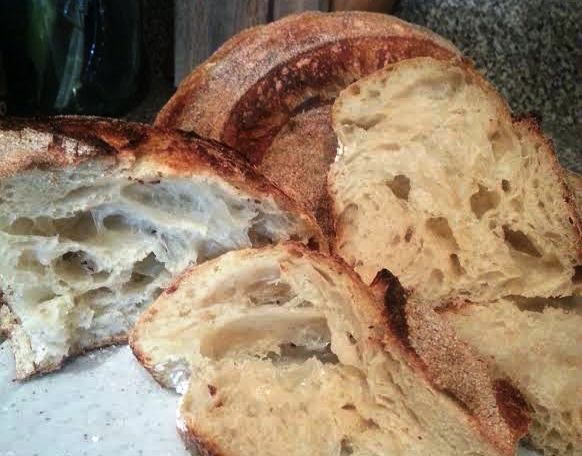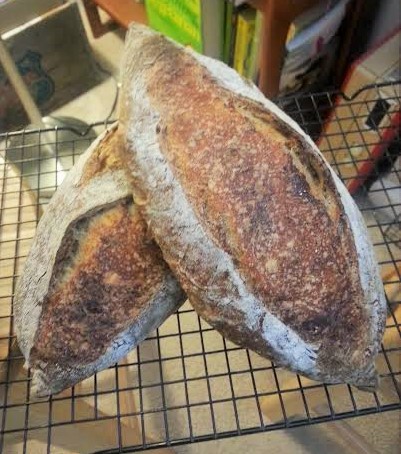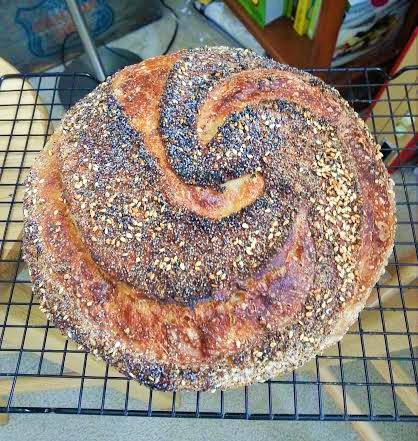
Memo's Brown Bread
I had promised to post this recipe for ehanner so here it is. This is the “brown” bread my grandmother used to make which we all loved so much. She passed away 25 years ago and I never thought I would taste it again.
Being a new bread baker I was determined to find out what recipe she used and duplicate it. Thankfully, my dear Aunt was there to help me since it was my grandmother’s own and not from a recipe ever recorded. As my Aunt told me, Memo (mee-moe), which was our name for our grandmother, baked this bread, before my Aunt, now 84, was born, in an old iron range heated by wood logs with guess and bigosh temps, as she says it.
So you can see that it was a challenge for me to duplicate this. Through emails my Aunt wrote from the very old hand-written notes of my grandmother and my Aunt’s own notes, I could begin. It took me several very disappointing attempts but soon I discovered the missing link. It was the type of graham flour and this is where I stress unless you use the Hodgson Mill Whole Wheat Graham flour or if you know of one that is identical to that in color, texture, and flavor this bread cannot be made properly. I tried Bob’s Red Mill and it did not even come close and several regular whole wheat flours just wouldn’t do it. There is something exquisitely yet mildly sweet in the Hodgson Mill graham flour that reminds one of a graham cracker flavor. And I knew the instant I looked at the HM graham flour it was right.
You can shape the loaves however you wish but I had to do it the way my grandmother did, making the two balls for each loaf. I can see her doing it in my head, and the first time this bread came out correctly I thought I would cry I was so happy. It transported me back in time. And the toast from this bread is simply the best. I hope if you try it you like it, too.

1 envelope active dry yeast
1/4 cup warm water (110° - 115°F)
2 1/2 cups potato water*
1 Tablespoon salt
3 Tablespoons sugar
1/4 Cup shortening
3 1/2 - 4 1/2 cups all-purpose flour
1 1/2 cups Hodgson Mill graham flour** (see important note below)
Sprinkle yeast on 1/4 cup warm water. Stir to dissolve and set aside.
Place sugar, salt, and shortening in mixing bowl and pour hot spud water over this and cool. The potato water should be about the temp of a baby’s bottle, warm to the wrist, otherwise it can kill the yeast.
By Hand: Stir 2 1/2 cups of all-purpose flour into bowl containing salt, sugar & potato/potato water to make a thin batter. Add yeast and beat well. Then add 1 1/2 cups graham flour and mix well. Stir in remaining all-purpose flour - 1 to 2 cups – until it can be handled on a floured board or counter. Knead in more flour until you have a smooth ball that no longer sticks to counter.
By Stand Mixer: Stir 2 1/2 cups of all-purpose flour into bowl containing salt, sugar & potato/potato water to make a thin batter. Add yeast and beat well. Then add 1 1/2 cups graham flour and mix well.
Stir in remaining all-purpose flour - 1 to 2 cups - to make a dough that leaves the sides of the bowl. Knead/mix until smooth and elastic, about 7 - 10 minutes.Place in greased bowl; turn dough over to grease top. Cover and let rise in warm place until it doubles, about 1 1/2 hours.
Punch down. Turn onto board and divide in half; round up each half to make a ball. Cover and let rest 10 minutes.
Shape into loaves and place in 2 greased loaf pans. Cover with cloth or sheet of plastic wrap and let rise until dough reaches top of pan on sides and the top of loaf is well rounded above pan, about 1 1/4 hours.
Bake at 350 degrees for 45 minutes, rotating half-way through if necessary. Cover loosely with sheet of foil the last 20 minutes, if necessary, to prevent excessive browning. Makes 2 loaves.
Brush melted butter over top of loaves upon removing from oven. Allow to cool.
*I peel and slice, very thinly, one small potato and boil in 4 cups of water until very well done – usually takes about 15 minutes because of the size of the slices. Then mash the potato in the water and usually the remaining water with the potato leaves the exact amount of liquid you need for the recipe – the 2 1/2 cups. If you need to, add a bit more water if you don’t have enough.
**You must use Hodgson Mill, whole wheat graham flour to be authentic to Memo’s bread, or if there is another brand that is exactly as Hodgson Mill. Hodgson Mill is the only brand of graham flour I’ve found so far that is the correct coarseness, color of grain and flavor. Other flours can be used but the entire flavor and texture of the bread is completely changed from what Memo used to make. This is a taupe colored wheat bread not golden as with regular whole wheat. It is beautiful and makes the best toast!













